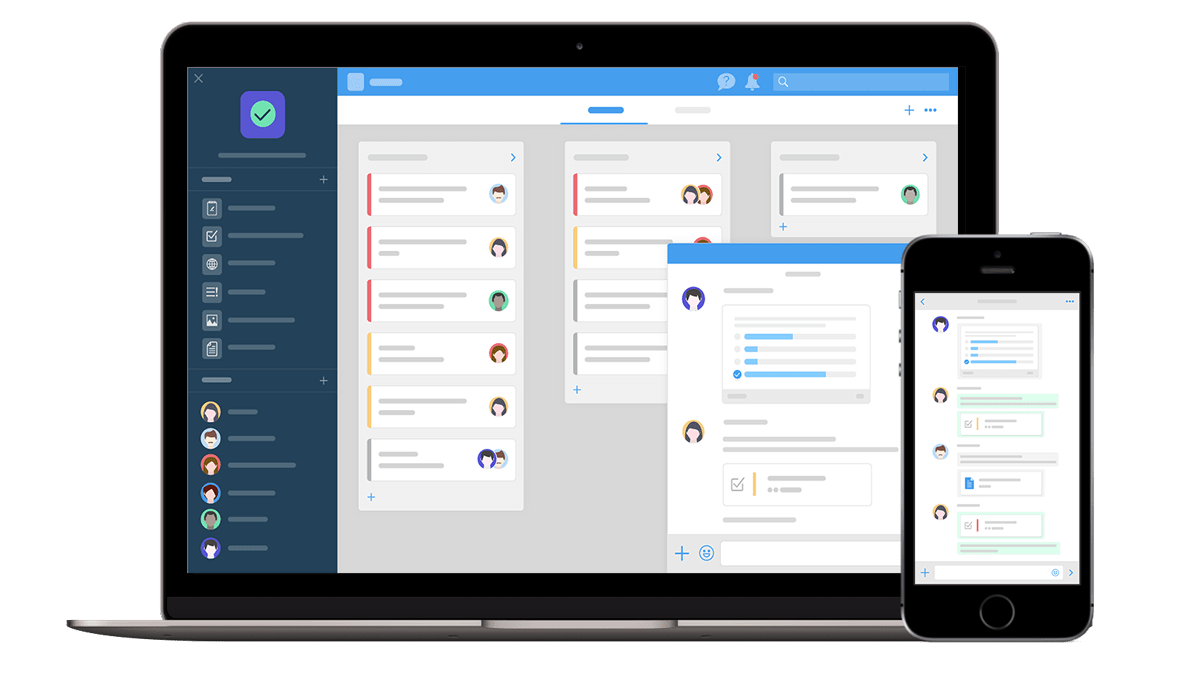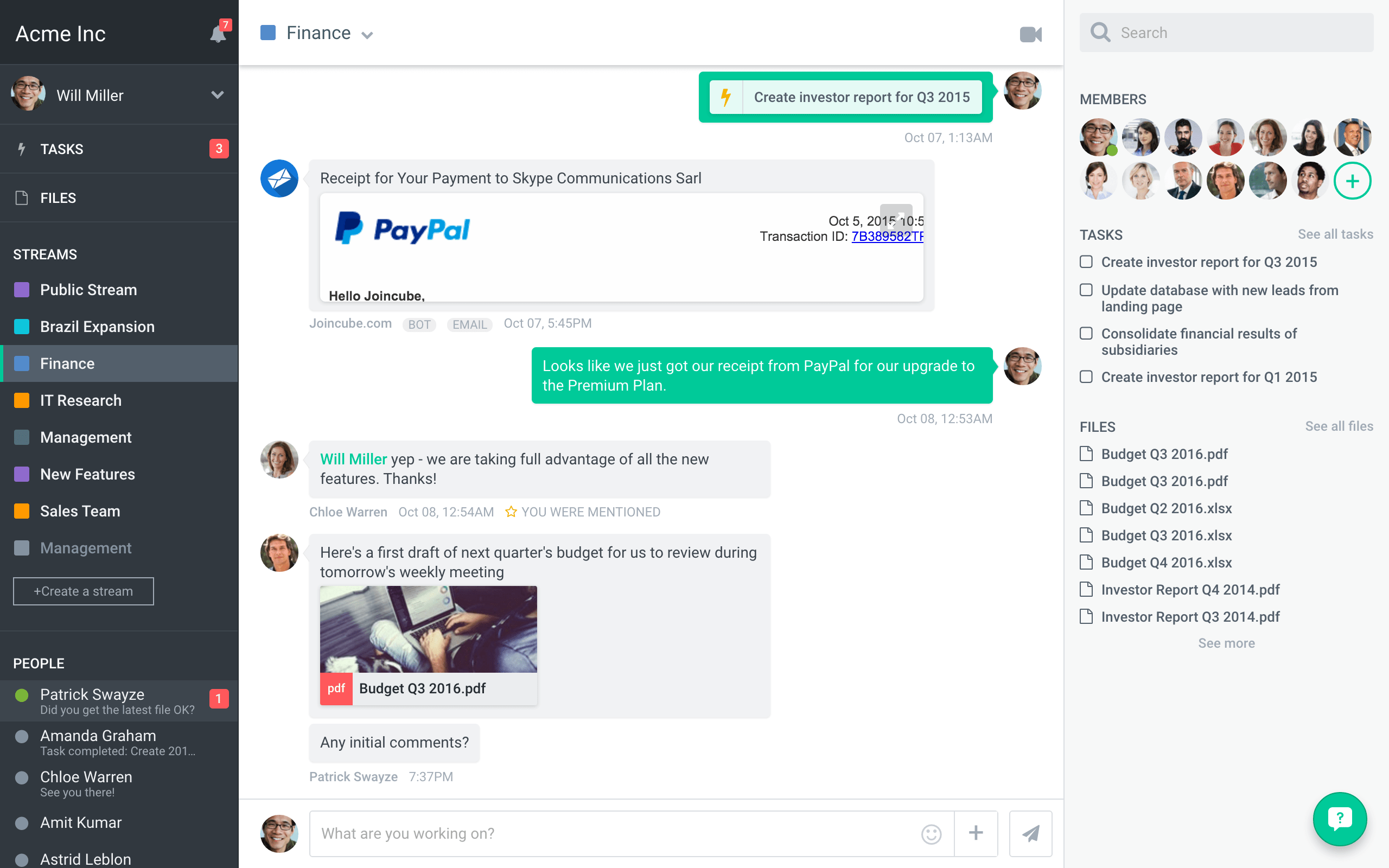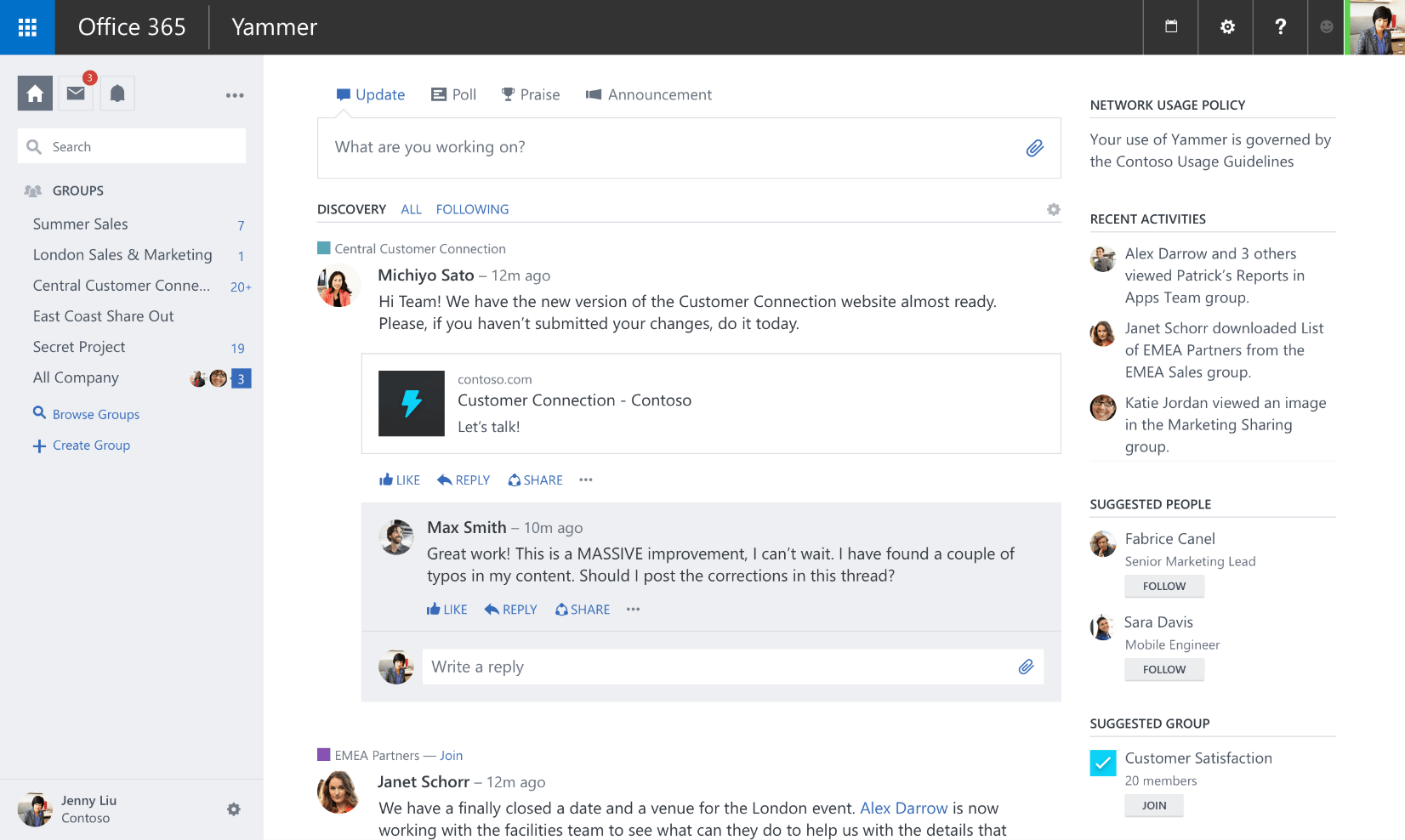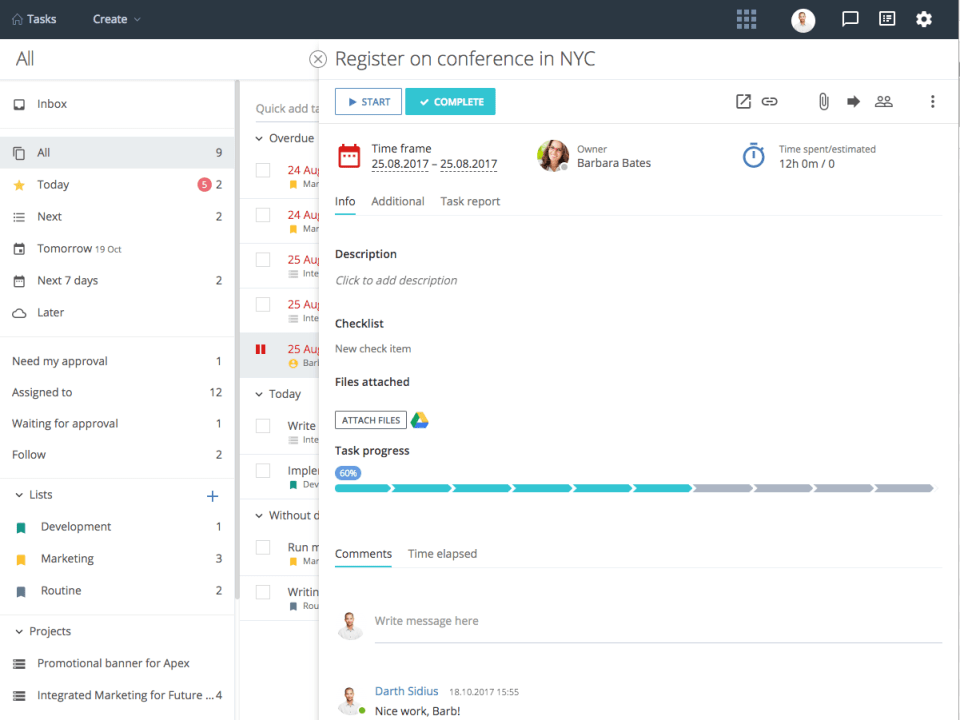18 Best Free Collaboration Tools
-
Kate Borucka
- 2024-02-27
- 12 min read
In today’s fast-paced and chaotic world it is important to communicate and collaborate via practical tools. The amount of information that we send and receive every day may become overwhelming if not managed properly. That’s why organizations and employees decide to use collaboration tools and apps—to make work more effective.
If you’re looking for a team collaboration software, you’re in the right place. Find out why it’s important to use project management to effectively manage team projects, what are the best collaboration tools, and what challenges you can meet.
What Is a Collaboration Tool?
Software for collaboration is a vital tool for enhancing teamwork and communication within organizations among team members and with stakeholders. It encompasses various types of team communication tools designed to streamline work processes and improve efficiency.
There are many collaboration tools available out there. Usually, you can choose from the following categories:
- Messaging apps: facilitate real-time communication, allowing team members to exchange messages, share files, and collaborate seamlessly.
- Project management platforms: help in organizing tasks, setting deadlines, and tracking project progress, promoting effective project management.
- Document collaboration: enable teams to collaborate on documents in real time, enhancing productivity and ensuring everyone is on the same page.
- Video conferencing: offers features allowing teams to conduct virtual meetings, fostering better communication and connection among remote members.
- File sharing services: provide secure and efficient file-sharing capabilities, ensuring that team members have access to the latest documents and resources.
- Collaborative editing tools: Platforms like Google Docs enable multiple users to edit documents simultaneously, encouraging collaborative content creation.
- Social intranet: serves as internal social network. It strengthens communication, collaboration, and improves knowledge sharing within organizations.
Choosing the right mix of collaboration tools depends on the specific needs and preferences of your team and company. It’s essential to integrate these tools seamlessly into your current app inventory to create a cohesive and efficient work environment.
Why You Should Use Collaboration Software?
Using software for collaboration brings only benefits. It improves the workflow, employees are able to clearly understand processes taking place in an organization, and it boosts people’s productivity. If you use the right tools, your business will be organized, and you will have a unified communication and work management channel.
Here are all the benefits of using team collaboration tools.
Cost-Efficiency
Free tools allow you to streamline communication and project management without breaking the bank. Your company doesn’t have to spend tons of money on software. And, if the free version can be upgraded to a paid plan with more advanced features, it gives you some space to test the app and decide if you’d like to invest.
Improved Communication
These tools break down communication barriers. Team members can easily connect and share ideas. Features like instant messaging and real-time updates foster a more collaborative environment. It’s easier to stay on the same page and communicate everything in real-time.
Productivity Boost
With shared calendars, task lists, and document collaboration features, free collaboration tools help teams to stay organized and on top of their tasks, ultimately boosting productivity.
Flexibility and Scalability
Many free collaboration tools offer scalable solutions that adapt to the size and needs of your team. They grow with you as your projects and team members expand. Note, however, that some tools may require you to subscribe to a paid plan. For secure file management and team coordination, looking into virtual data room providers can further enhance your team’s collaborative efforts.
Remote Work Facilitation
Digital collaboration tools are invaluable for remote work scenarios. They ensure seamless collaboration regardless of geographical location You can also find many features that help to stay connected.
Task Tracking and Project Management
Free collaboration tools often include robust project management features, allowing you to track tasks, track expenses, set deadlines, and monitor progress effortlessly.
Centralized Information Hub
Having a centralized platform for documents, discussions, and project updates ensures everyone is on the same page. This is crucial for efficient project management.
Integration Capabilities
Many free tools integrate with other software and apps, offering a cohesive digital workspace. This interconnectedness simplifies workflows and saves time. There are mobile apps, desktop apps, and web platforms. This cross-platform availability makes it easy to connect with the team no matter where you are.
User-Friendly Interfaces
To enhance your user experience, these tools typically have intuitive interfaces. This means less time spent navigating complex features and more time focusing on your actual work.
Community Support and Updates
Free tools often have active user communities, providing a valuable resource for troubleshooting and exchanging tips. Regular updates keep the software current and secure. That helps to stay on top of your work despite quick changes in the business world.
What Are the Best Team Collaboration Tools?
With so many apps available on the market, it can be challenging to choose the best one, especially with the freemium version (not all tools offer free plans). Additionally, some free apps don’t provide all the necessary features. That may be tricky.
What to Look for in a Good Team Collaboration Tool?
Here are the key features it’s worth looking for in a good collaborative tool:
- A tool that’s easy to navigate with a user-friendly interface ensures quick adoption and seamless collaboration among team members.
- Look for tools that offer chat, video conferencing, and discussion forums. Effective communication is the cornerstone of collaboration.
- File sharing and storage of files. Tracking changes and access permissions are also essential.
- Task Management: A good collaboration tool should have task assignment, tracking, and deadline features. This helps keep everyone on the same page regarding project progress.
- Integration with other apps and mobile accessibility to streamline workflows and enhance overall efficiency.
- Protecting sensitive data is crucial. Look for tools with robust security features, such as encryption and access controls.
- Customization options so you can tailor the tool to your team’s specific needs.
- Real-time editing features can be a game-changer for projects that involve document collaboration.
- Tools that provide insights into team performance, task completion rates, and other metrics can help in refining collaboration strategies.
If you’re looking for the right tool, take a look at our list of best free collaboration tools.
#1 TimeCamp Planner
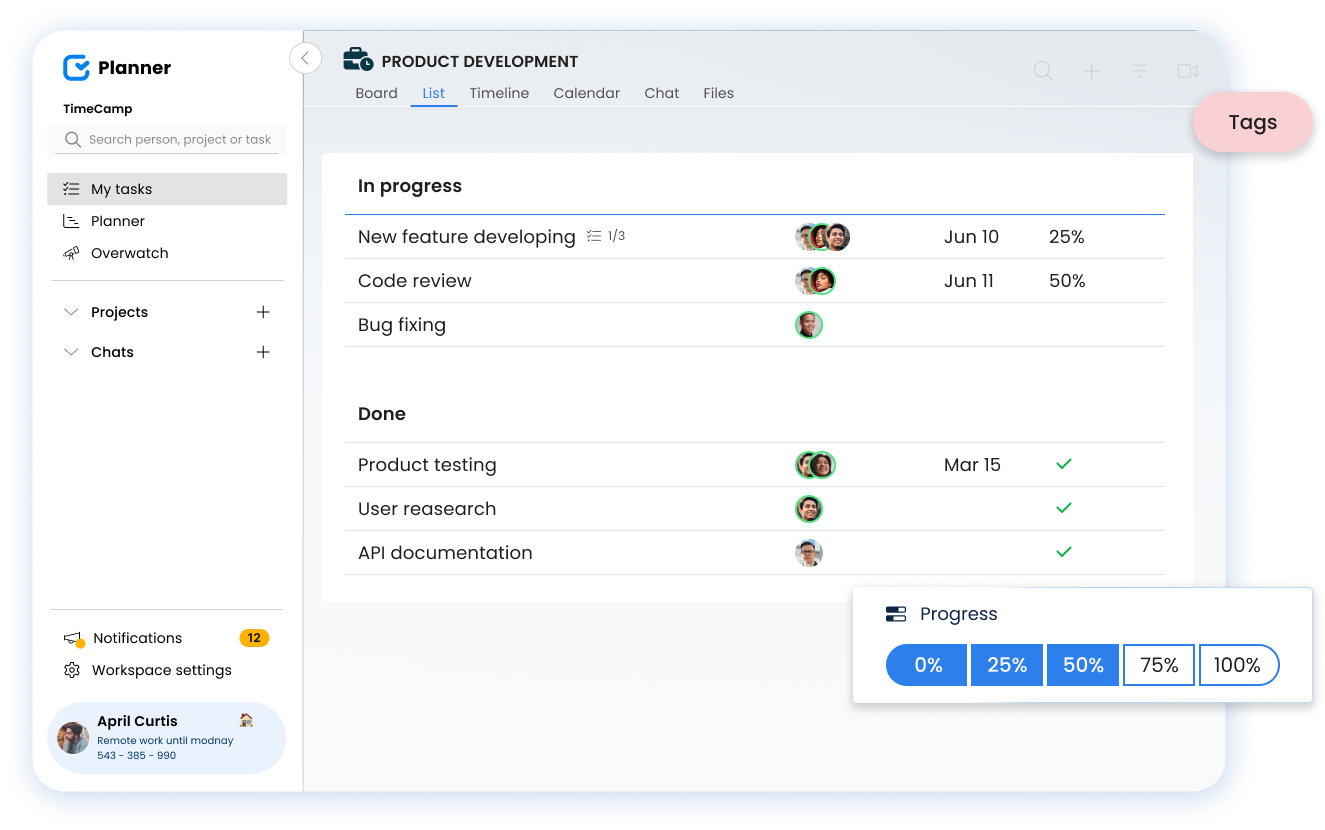
Created by the Timecamp team, TimeCamp Planner is a free task management software for everyone. It’s a combination of Slack and Trello. It’s also useful for remote teams. TimeCamp Planner has plenty of useful features that good collaboration software should have:
- Thanks to its design, you can see three boards in one place—your team and spaces (different channels), chat, and a list of cards with tasks.
- You can easily convert part of your conversation into a task.
- The collaboration board with tasks allows you to see all projects in one place.
- Every task can be adjusted—you can set date, assign people to it, add tags, description, files, comment on it. All to keep you updated on task progress.
- You can share files any way you like.
- The feature of workspaces allows you to create many spaces, if, for example, you work for various organizations or have different clients.
- Pleasant and intuitive interface.
TimeCamp Planner gives you space to freely and smoothly collaborate with your teams and clients. No more switching between apps and tabs. You have everything in one place!
Take your company to another level.
Use TimeCamp Planner to keep project management under control
Discover comprehensive features tailored for every stage of team collaboration.
#2 Filestage
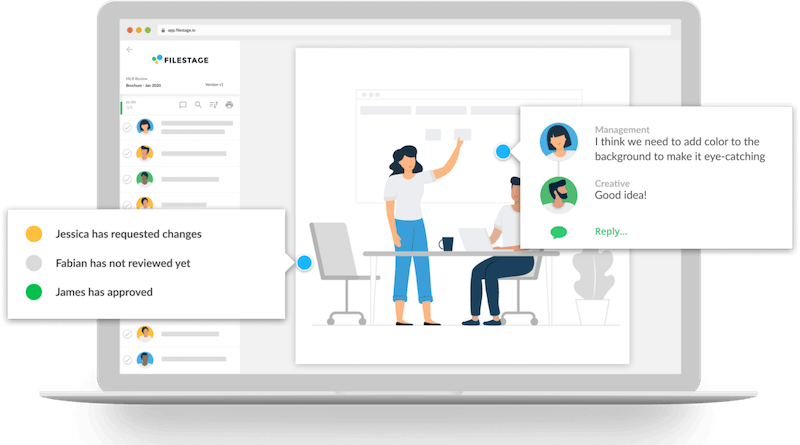
Filestage is the enterprise-ready online proofing software that helps teams get their work reviewed and approved faster. The tool enables colleagues and clients to view, comment, and annotate files in real-time to collect and discuss feedback.
Furthermore, Filestage streamlines collaborative work with customizable workflows, task automation, and in-built versioning of files. The tool also reduces stress for your colleagues or clients by providing them with a simple way to communicate and give feedback. They don’t even need to sign up.
With Filestage you can manage all your review processes in one place, speed up approvals, and complete projects faster by eliminating back-and-forth email chains.
#3 Kezmo
Kezmo is a collaboration software for teams of any size. It’s one of the best online collaboration tools for free with all the necessary features.
In Kezmo, you can create workspaces for different projects or clients, keep track of tasks’ deadlines, share and organize content, create polls, add files and images, assign tasks, create different channels adjust language or declutter conversation by separating it into channels. Kezmo is an intuitive tool with a plain interface.
#4 Miro
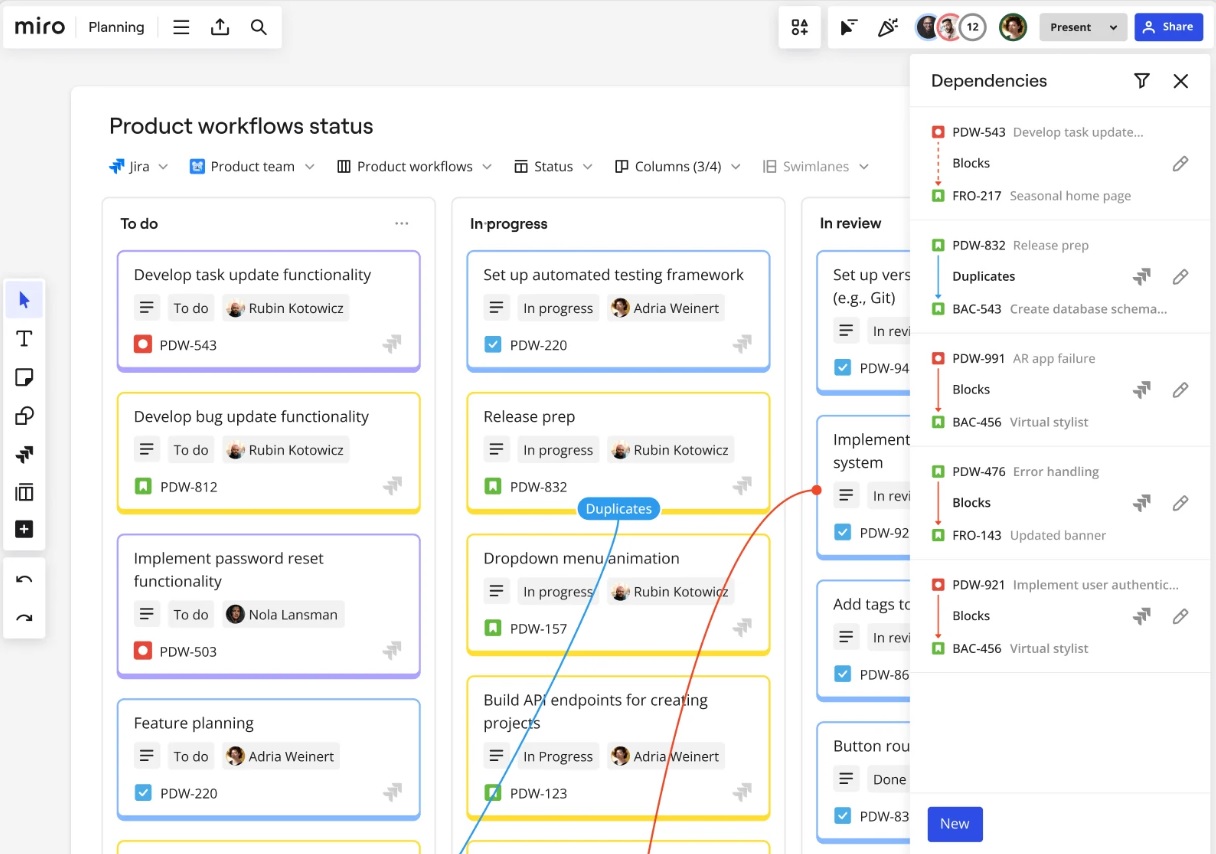
If you’re looking for a simple solution, Miro will be your perfect match. The tool has the form of a virtual whiteboard, which you can decorate with sticky notes, charts, flows, and any other form of shapes to organize ideas and manage workflow. No matter where your team is, they can all access Miro and chat over the project, brainstorm, and add new ideas.
This collaboration software allows you and your team to digitize ideas, plans, and tasks with project templates (Kanban, Business model, Flowchart, and many, many more). This creative project management tool is most suitable for remote or distributed teams.
#5 ClickUp
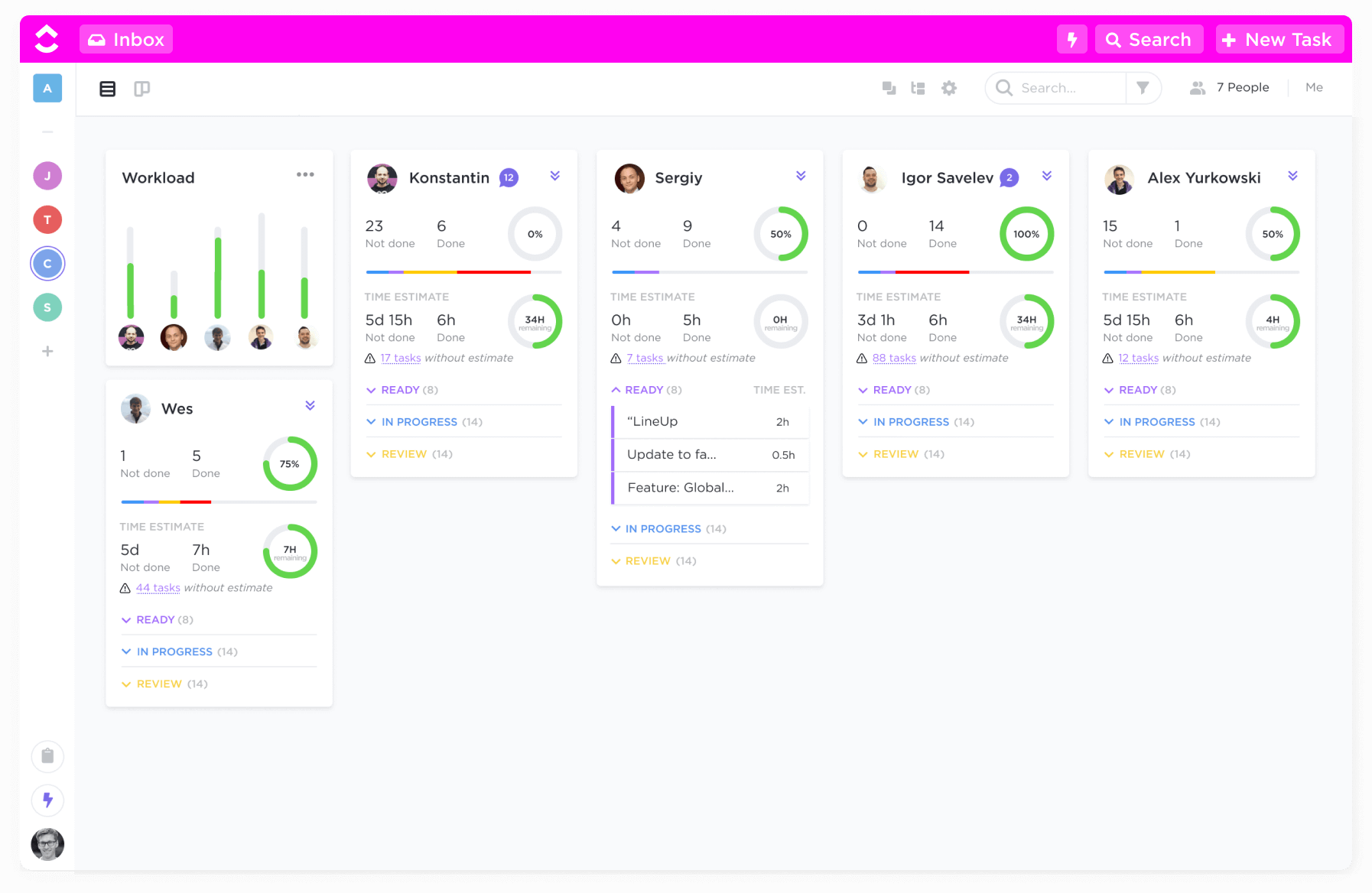
ClickUp is the best collaboration tool because it offers a versatile platform that goes beyond just task management. It brings teams together with features like customizable views, goal tracking, time tracking, document collaboration, seamless integrations, automation, prioritization, custom fields, and mobile accessibility.
The flexibility it provides is fantastic—you can adapt it to various workflows, making it suitable for different types of projects. Plus, the clean interface and user-friendly design make it easier for teams to navigate and stay organized.
#6 Samepage
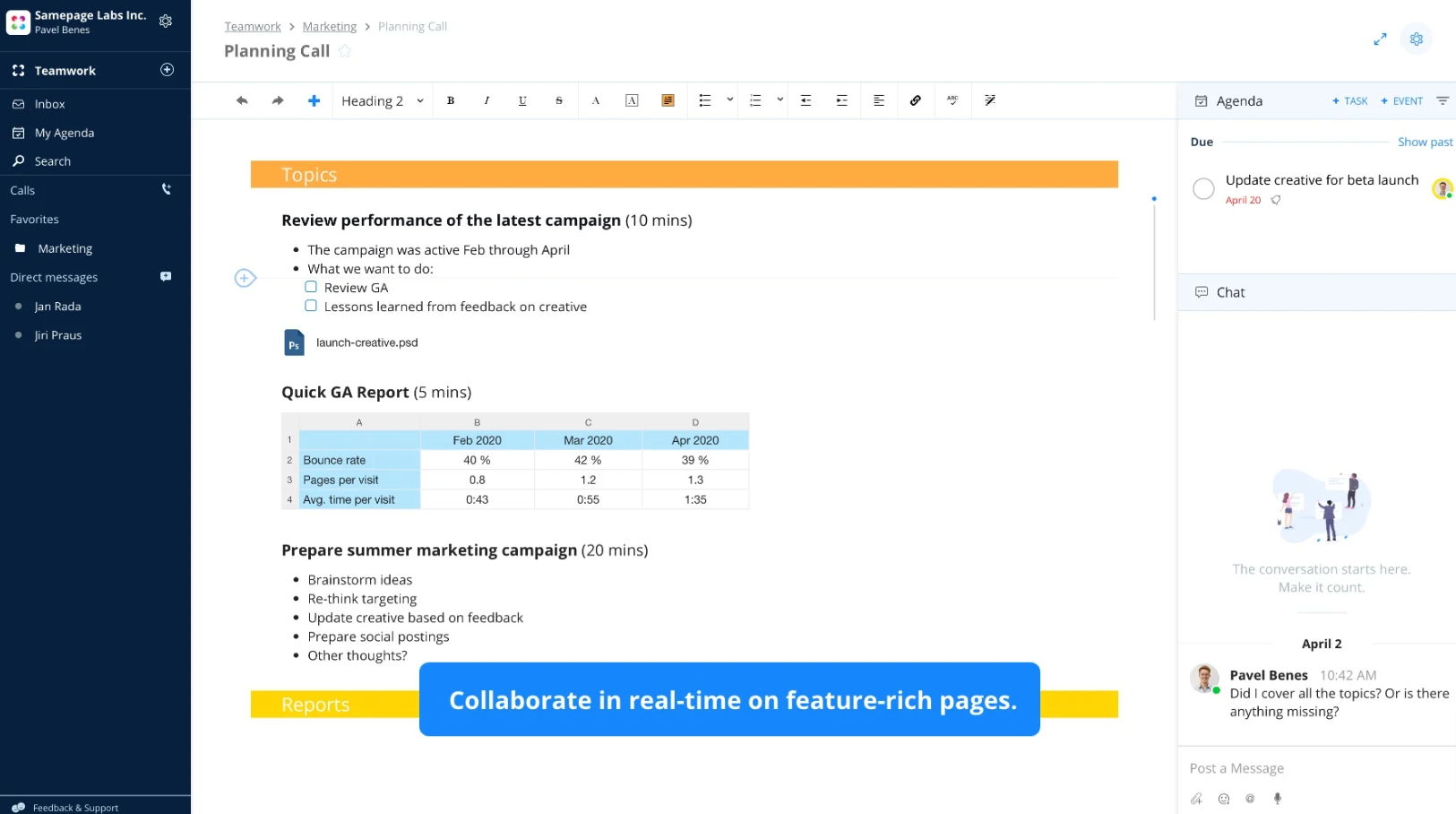
Samepage is software dedicated to people who want to improve the team’s collaboration. Some of its main features include team chat, video conferencing, task management, file sharing, or real-time document collaboration. It’s a good alternative to advanced project management platforms as these often don’t include collaboration aspects.
Samepage allows team members to share any type of information, files, videos, etc. and by that improve collaboration. Moreover, it saves the effort of jumping from one app to another to check the project’s or task’s status and your team’s work progress. You can choose from several different views: collaboration board, spreadsheets, mindmaps, calendars, etc. If you are looking for good collaboration tools you should definitely consider Samepage.
#7 RingCentral Video
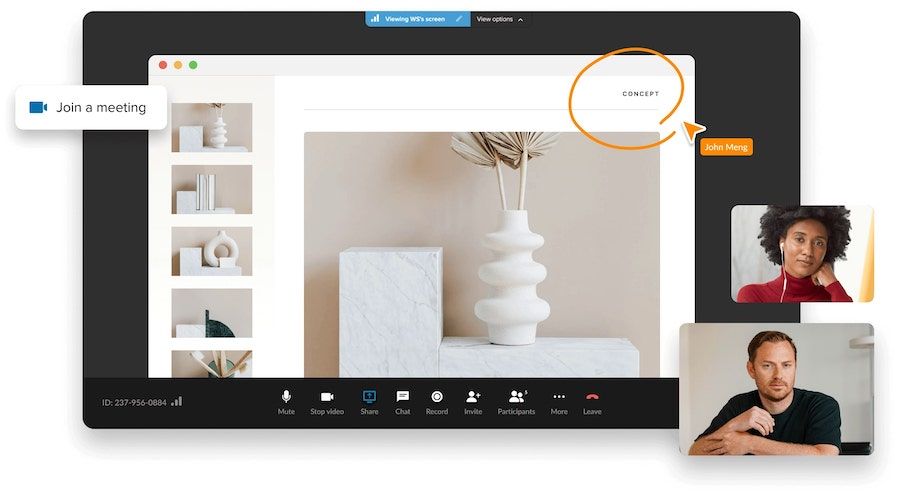
Certain tools are created for certain purposes. RingCentral Video was created to enhance team collaboration via a solid communication channel. It’s an easy, intuitive, and functional video conferencing platform. It also offers task management with chat. It’s a great solution for enthusiasts of simplicity. Apart from chat with the function of screen sharing to collaborate live, RingCentral Video offers managing tasks. Tasks can be easily adjusted thanks to various options.
Among conferencing tools, you’ll find advanced meeting insights (summaries, topics, keywords, or video highlight reels), live transcription, AI-powered noise reduction, presentation modes, and auto-follow.
#8 Hibox
Hibox is a combination of chat, video tool, and task management software. It allows you not only to chat with your team but also to connect with them via video meetings. Thanks to that you can talk to them from every place.
In Hibox, you can create streams for different teams, share files, and create tasks for employees who are part of the stream. You can manage conversations, files, and track tasks organized by the project while you have multiple projects running at once.
Hibox’s tasks can be personalized by adding files, setting deadlines, or even by using the assistance of personal AI. It’s available as a mobile app and integrates with various tools and apps.
#9 Yammer
If you’re a fan of Facebook, you may like Yammer for its design—it is very similar to the famous social media platform. It’s a part of Microsoft Office 365, and if you’re using other Microsoft Office products, you may want to consider choosing this collaboration software. It fosters communication and collaboration within big companies.
Yammer helps to draw a certain scheme for a hierarchy in the organization. It connects the team with leaders and people being at the top of the organizational hierarchy ladder. That allows staying connected with every member of the company and with every project. In Yammer, you can easily join and create groups relevant to your work and interests, safely collaborate with contractors, customers or sister companies. You can also add various files to conversations. Yammer is available as a mobile app for iOS and Android.
#10 Flowlu
Flowlu is a simple collaboration tool with all the features a team and project managers need to communicate and cooperate. It has an online chat, workspaces with a dedicated activity feed, project planning, reports for tasks and projects, and a section for file sharing.
In Flowlu, you can easily chat with your team, organize online meetings, manage tasks, engage in real-time collaboration, and streamline the workflow. You can monitor your projects on a comprehensive collaboration board. The tool has an easy-to-use interface.
#11 Clinked
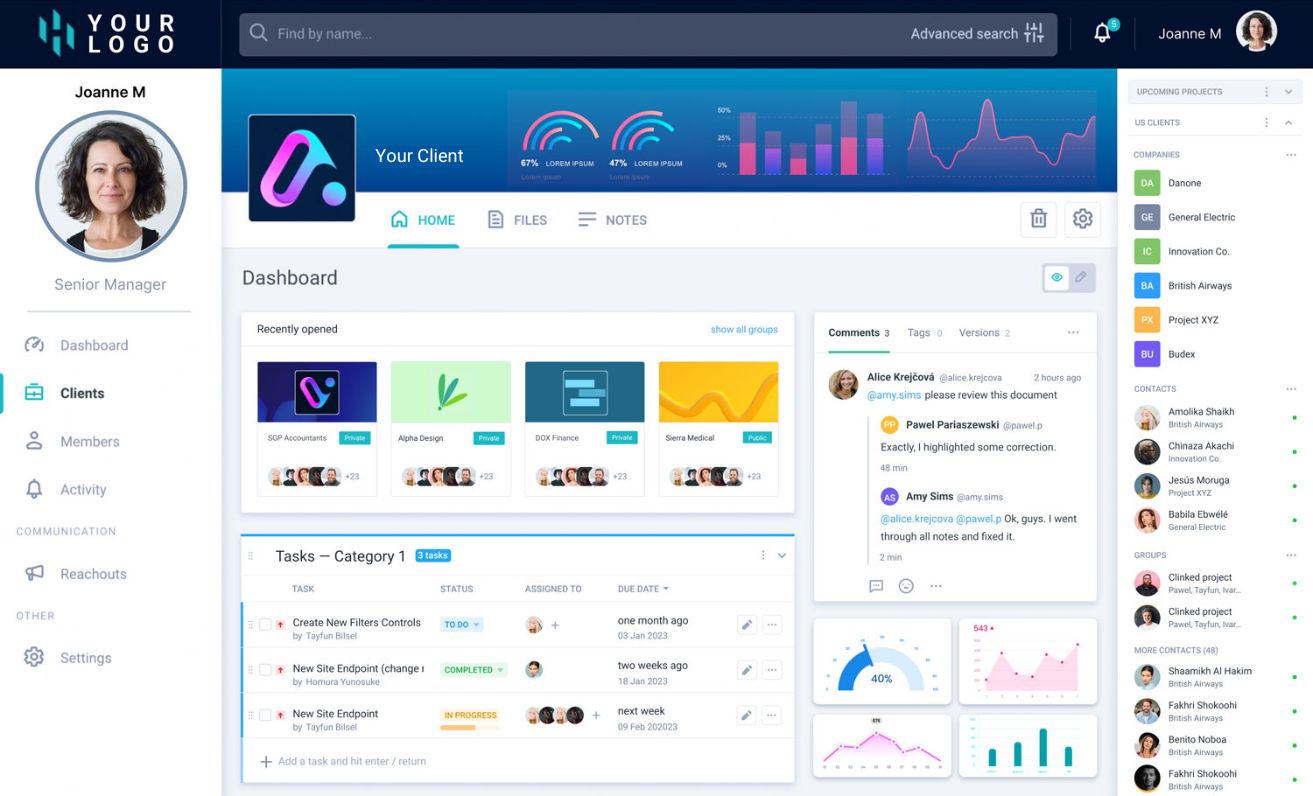
Created by Rabbitsoft, Clinked is an easy-to-use, comprehensive collaboration software. The tool is available as a mobile version so you can easily access it from any place in the world. Additionally, you can work both with clients and your employees, thanks to the feature of workspaces.
Clinked works similarly to project management software and can effortlessly collaborate with other people. The software is a great solution for organizations who want to improve cooperation with clients.
Thanks to Clinked, you speed up processes, don’t need to organize meetings, and smoothly transfer information and provide updates on projects. If you want to improve the business relations of your organization, Clinked is the right collaboration app.
#12 Google Workspace
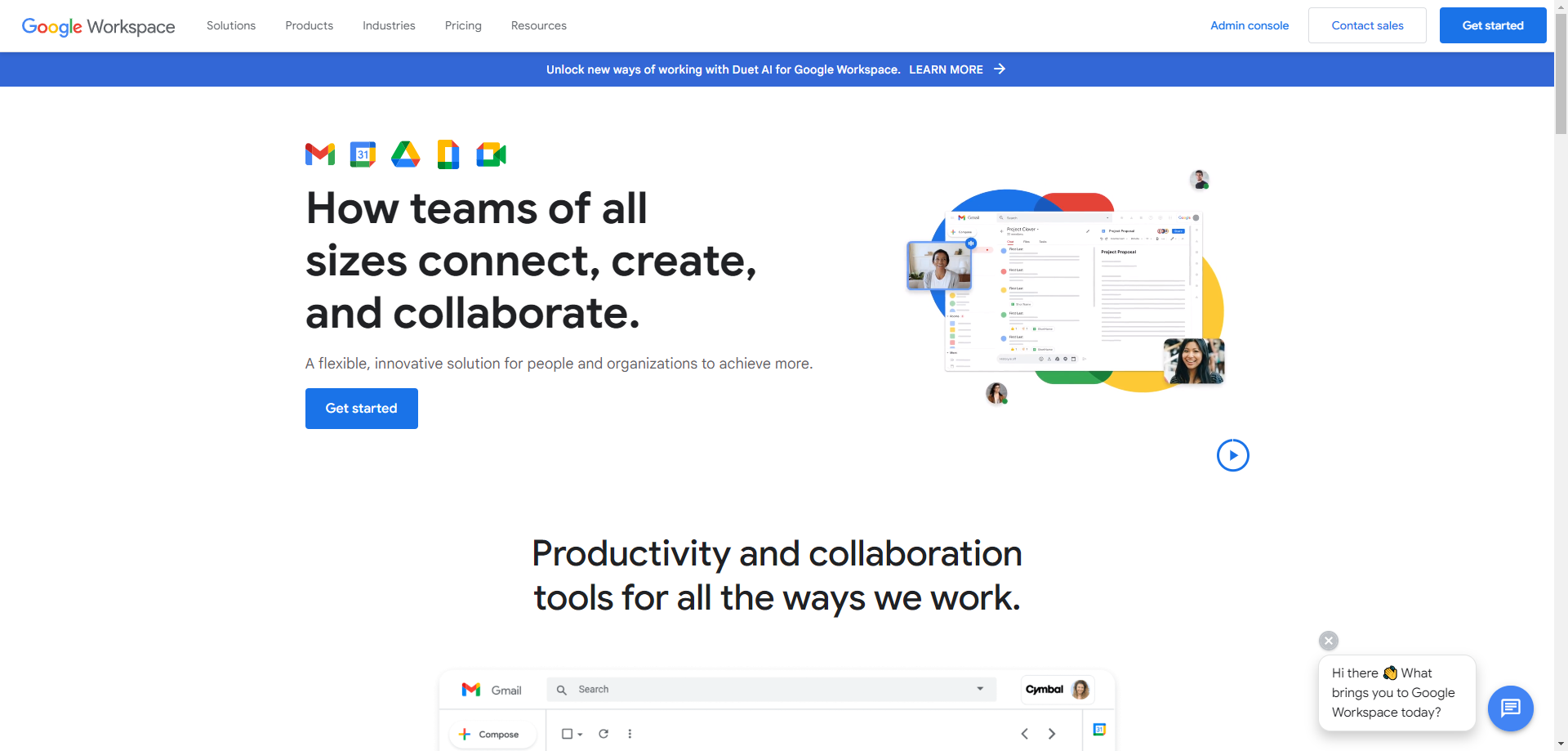
Google Workspace is one of the best online collaboration tools. It’s a versatile suite for remote and hybrid teams, integrating audio and video calls, file-sharing, and Google Calendar for seamless collaboration. It fosters unity among dispersed team members, streamlines document sharing, and enhances time management.
It easily integrates with other tools, including all the top online collaboration tools, other video conferencing tools, and productivity and project management tools.
#13 Markup Hero
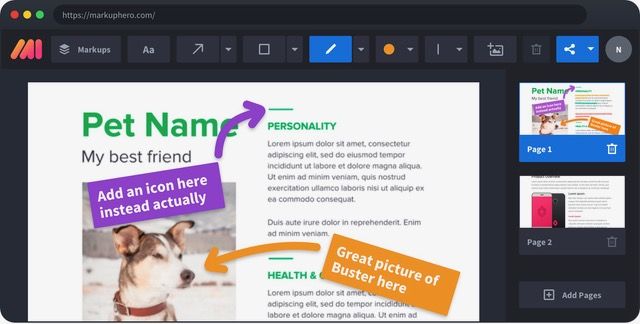
For fast and easy feedback on project tickets, marketing comps, content marketing, screenshots and just about anything else, try Markup Hero. Annotate images, PDF’s, Google Docs and more. No account or credit card is required to try!
It’s a useful asset for both productivity and communication making it easier to convey ideas and collaborate with others. The tool is particularly handy for those involved in content creation, creative teams, marketing teams, project management, and communication where visual elements play a crucial role.
#14 Zoom

Zoom is a powerhouse in the realm of team collaboration. As a top-tier audio and video conferencing tool, it seamlessly brings teams together, fostering communication and connection. With robust features like group chats and screen sharing, Zoom isn’t just a platform; it’s a catalyst for effective collaboration.
Its user-friendly interface and reliable performance make it a go-to choice for businesses worldwide. Whether it’s virtual meetings, brainstorming sessions, or collaborative projects, Zoom ensures teams stay connected and productive.
#15 Microsoft Teams
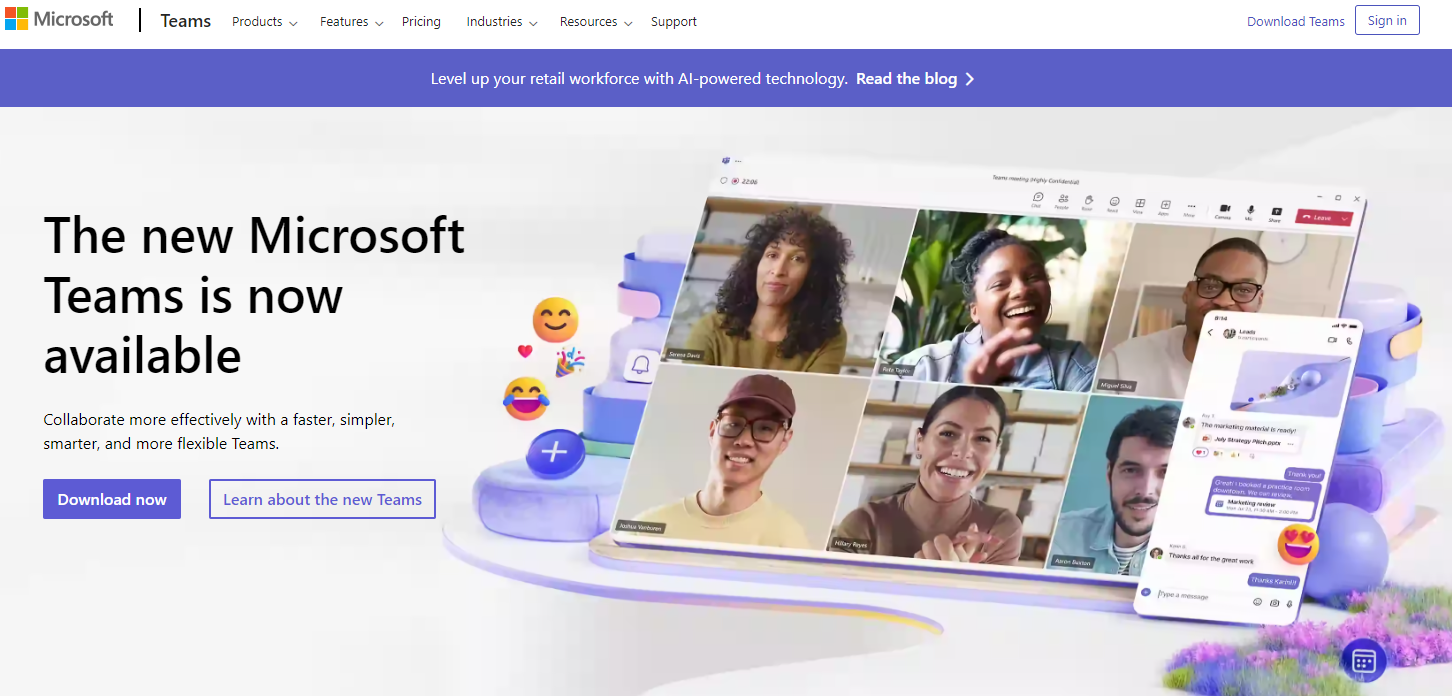
Microsoft Teams is one of the most popular project management tools. It’s a robust collaboration platform designed to streamline project management. It excels in helping teams manage projects, project tasks, and to-do lists efficiently. The interface enables teams to collaborate seamlessly, and video calls foster a cohesive working environment. With features like project timelines, it provides a structured approach to project planning and execution.
Microsoft Teams stands out among collaboration platforms for its user-friendly interface and integration with various Microsoft 365 tools. It’s a powerhouse for teams aiming for enhanced productivity and effective project coordination.
#16 Dropbox

Dropbox is a heavyweight in the file-sharing arena and one of the best online collaboration tools, especially for distributed teams. With its seamless file-sharing capabilities, Dropbox has become a go-to platform for individuals and businesses alike.
It helps in streamlining collaboration by making file sharing a breeze. It’s simple in use but effective—you upload, share, and collaborate. Additionally, it has a user-friendly interface.
One standout feature is its support for offline editing. Dropbox also offers other tools to help you personalize your platform with different customization options.
#17 Twist
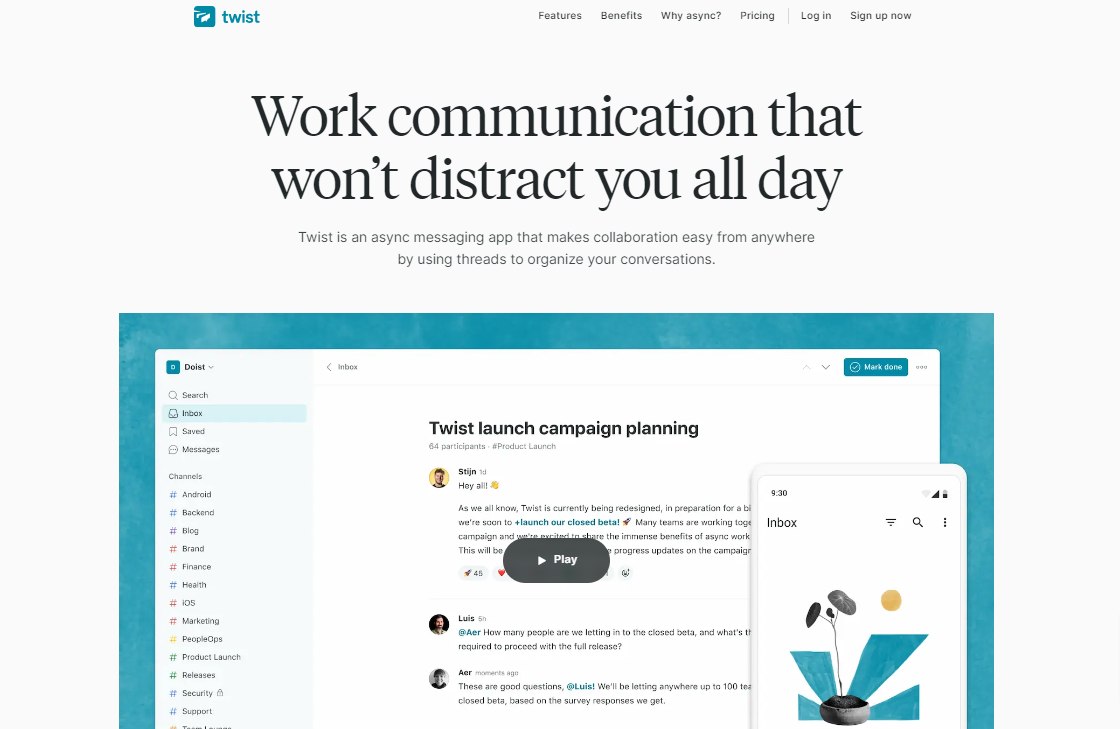
Twist by Doist is dedicated to people who would like to keep the e-mail style of correspondence and manage their tasks based on it. This tool is a great alternative for e-mail. What is more, you can be sure that your messages and data are secured.
Twist combines threaded conversations with task management, allowing you to organize discussions, create tasks, and collaborate seamlessly. Other features include channels, mentions, sharing files, and robust search functionality, providing an effective platform for email-style correspondence and task handling.
#18 GitLab

GitLab stands out as an all-encompassing DevOps platform, designed to streamline the software development lifecycle. It’s centered around Git for version control, offering powerful features for branching, merging, and code review.
One of GitLab’s strengths lies in its integrated CI/CD pipelines. Teams can automate testing and deployment processes, ensuring a smooth and reliable release cycle. The platform also excels in issue tracking, project management, and collaboration tools, creating a cohesive environment for development teams.
GitLab prioritizes security with built-in features like SAST and DAST. It’s suitable for teams of all sizes, thanks to its scalable architecture.
Challenges of Using Collaboration Tools
Implementing collaboration tools may pose certain challenges. That’s when using them may become problematic. Here are the most common challenges and potential drawbacks of free collaboration tools:
- Security concerns—free tools might lack the robust protection needed for sensitive data.
- The risk of limited features—what you gain in cost-effectiveness, you might sacrifice in functionality.
- Support can be another Achilles’ heel; with free tools, you might find yourself on a lonely road if issues arise. Customer support matters.
- Managing the learning curve for new tools can be hard and discouraging.
Remember that prior to deciding which tools you’ll use, consider all the pros and cons.
What Are Your Favorite Collaboration Tools?
Working together can be enjoyable; you only need to have the right collaboration tools. Remember to choose wisely and use the tools that suit your business needs!
And what’s your favorite app for team collaboration?
Happy collaborating!
